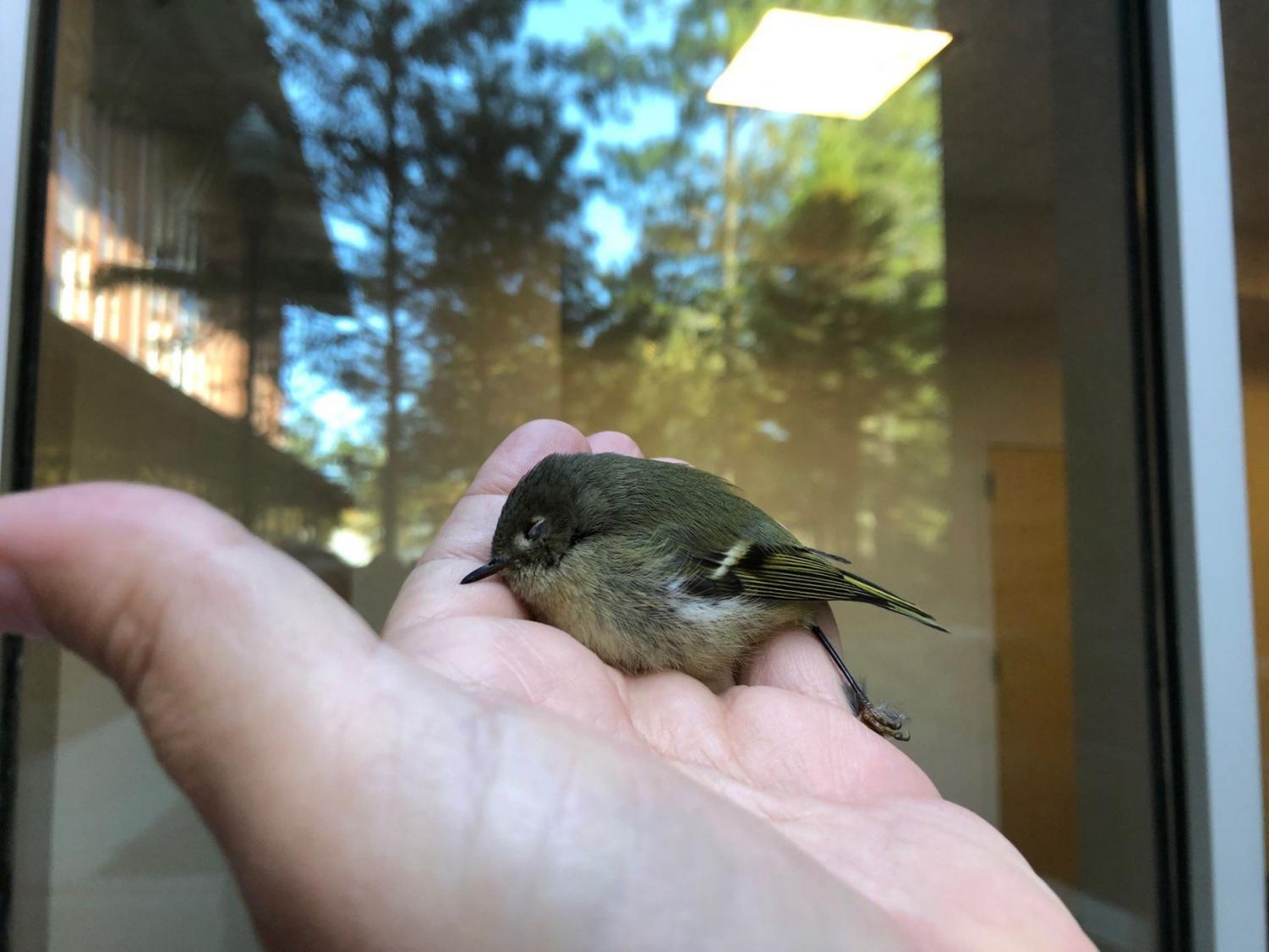Georgia Southern biology professor and student conducting research to prevent bird deaths on campus
February 11, 2019
A Georgia Southern University biology professor and graduate student are conducting research calculating how many birds are killed by windows on campus and the cost of reducing the issue.
Professor Ray Chandler and graduate student Antarius Mclain’s research estimates that at least 700 to 800 birds are killed on campus every year by flying into windows on campus.
Mclain said his study consists of searching randomly selected buildings for any window-strike bird remains. Once strike is discovered, various data points are recorded such as location, weather, window direction and environmental factors.
“The idea to investigate window strikes popped into my head while looking at the big windows of the Biological Sciences Building,” Mclain said.
Chandler said the team has determined that the window glass in buildings is the greatest threat to the birds on campus, and their 700 to 800 bird death toll estimate actually shoots up to 1,000 with birds falling into shrubbery and being eaten by fire ants as a result factored in.
Newer buildings with large banks of highly reflective windows kill the most birds, and the Recreation Activity Center, Information Technology, Chemistry, Education and Lakeside buildings cause the most bird deaths on campus, Chandler said.
Once Mclain is finished with the research, the team will point out the problem to the university so that they can work toward feasible solutions.
Chandler said that the best and most cost-effective solution is to make windows in future buildings bird-friendly by screening over them and building with bird-friendly glass that is frosted, etched or coated in a way to be less reflective, so that birds will be able to perceive the surface.
“It’s a frustrating problem,” Chandler said. “Building solutions have been known for quite awhile now, so it’s frustrating that these solutions are not incorporated into more buildings, especially on college campuses.”
Chandler said that there are solutions available to make hazardous windows bird-friendly, but they are more costly.
“Once a hazardous window is in place, it can be covered with various commercially available tapes and films to make it more visible to birds,” Chandler said. “This is a great solution for small-scale problems, but it quickly gets expensive over a large campus of many buildings like ours. Building bird-friendly in the first place is the best option.”
Mclain said the biggest obstacles for saving the birds on campus are the cost and aesthetic appeal of the buildings, as modern-styled buildings tend to be built with big windows.
“I think we can all agree that this style building looks amazing, but they are also a big hazard to birds,” Mclain said. “The university may not want to spend the time or money to make windows safer for birds when they have spent the money and planning time to create an appealing structure.”
Mclain said this issue can be solved by considering wildlife during the planning and designing stages of the buildings, and not as an afterthought.
Chandler said that while applying these films to the campus’ existing windows would be an expensive and logistic challenge, the bird-death situation on campus is a worthwhile and major issue.
“This is an astounding loss of wildlife that needs to be addressed,” Chandler said.
Chandler said that small songbirds are the most common victims of window-related bird death, and that common yellowthroats, yellow-rumped warblers, mourning doves and hermit thrushes are the most common victims on campus.
“We try to make the best of a bad situation by using the dead birds for scientific study and to make study skins for classroom use,” Chandler said.
Mclain said that he wants his research to help the university understand the magnitude of the window-strike problem.
“As the campus and university continue to expand, I hope that they will think more about wildlife and biodiversity while in the planning stages,” Mclain said. “I hope that my research will help the university take the proper steps to reduce the number of strikes.”
Elizabeth Gross, The George-Anne News Reporter, ganewsed@georgiasouthern.edu



